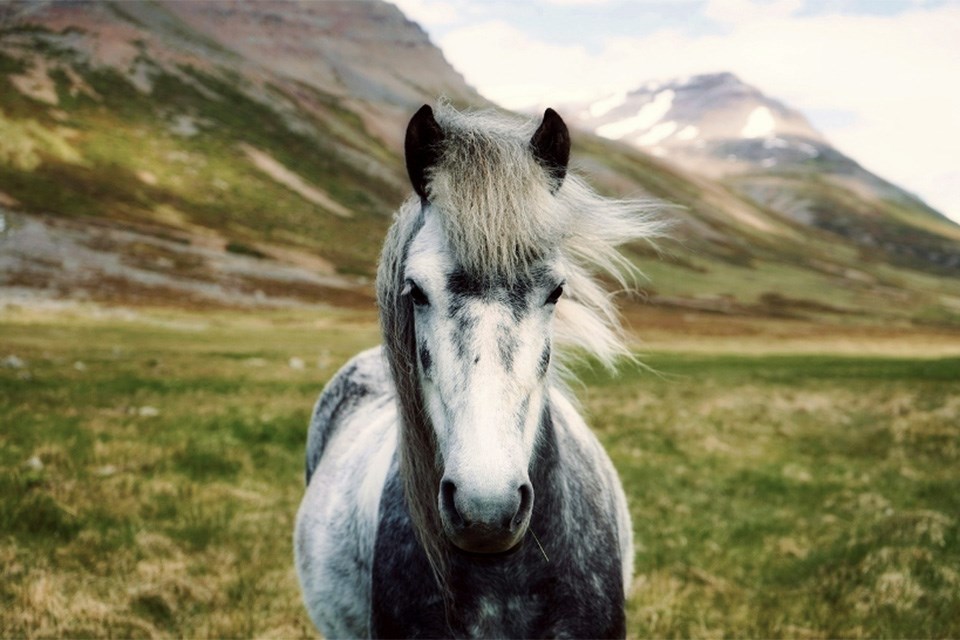From their evolutionary roots to their free-roaming descendants in Alberta's foothills, wild horses capture the imagination and tug at the heartstrings of all who encounter them. But what do we know about Alberta's wild herds and how can we help protect them? Let's explore!
A Brief History of the Horse
Horses first evolved on the plains of North America around 4 million years ago. The earliest known species, Equus simplicidens, roamed freely across the continent and later spread to other regions such as Asia, Europe, and Africa. Then there is a gap in the record.
Fast forward to the late 1400s, when European settlers reintroduced horses. Spanish conquistadors brought these hardy animals with them and many escaped captivity, creating wild populations across the continent. For Indigenous communities, horses became treasured companions and essential to their way of life, spreading utility and freedom throughout their culture.
Alberta's Wild Horses Today
The province of Alberta is home to some of Canada’s most stunning free-roaming horse herds, often referred to as "wildies." These majestic animals inhabit the Eastern Slopes of the Rocky Mountains, an area known for its rugged terrain and breathtaking scenery. The heart of this horse territory lies in the Sundre region, where the largest herds are found. However, Alberta's relationship with its wild horses is complicated.
These horses trace their lineage to working animals released by miners, loggers, and ranchers in the early 20th century. Living without human intervention for decades, they adapted to their environment and became icons of Alberta's wilderness. Despite their resilience, Alberta's wildies face significant challenges today, including habitat loss, conflict with the cattle industry, and ongoing debates about their classification as "feral" or "wild."
The Challenges They Face
Wild horses in Alberta are often viewed through opposing lenses. Conservationists admire their ecological role and majestic beauty, while others, such as ranchers, express concerns about overgrazing and competition for resources with livestock. These tensions have, at times, led to controversial government-backed population controls like capture programs or, in the past, culling.
Most recently, the Alberta government introduced a Feral Horse Management Framework, aiming to strike a balance between conservation, humane management, and stakeholder interests. While this may seem like progress, debates about methods such as contraception or euthanasia remain heated.
Protecting Alberta's Wildies
Several dedicated groups and individuals are working tirelessly to protect Alberta's wild horses.
The Wild Horses of Alberta Society (WHOAS) has been advocating for humane approaches to population management since 2002. They rescue horses in distress, offer adoption programs, and educate the public about the wild herds. They also maintain a rescue and handling facility near Sundre, where abandoned or injured horses get a second chance at life. WHOAS collaborates with government agencies, lending a strong voice to the horses who cannot speak for themselves.
The Help Alberta Wildies Society (HAWS), led by passionate wild horse advocates like Darrell Glover, focuses on monitoring and preserving wild horse populations. By installing cameras and recording data, they strive for informed management practices while highlighting the horses' innate ability to coexist with other species.
What Should You Do If You Encounter a Wild Horse?
If you're lucky enough to spot a wild horse in Alberta, consider it a remarkable gift. However, it’s crucial to respect them and their environment. Here are some tips to keep in mind:
- Keep Your Distance - Admire from afar. Wild horses are unpredictable, and close contact could stress them out or put you at risk.
- Don’t Feed Them - Feeding disrupts their natural foraging habits and can draw them closer to roads or human settlements, increasing dangers such as vehicle collisions.
- Drive Carefully - When travelling through areas like the Sundre region, watch for signs indicating the presence of wild horses.
- Report Issues - If you notice a wild horse in distress or in a hazardous situation, reach out to organizations like WHOAS for advice or intervention.
Protecting Alberta's wild horses is a collective responsibility. Their freedom symbolizes the beauty of the province's wilderness, but that freedom is fragile. You can support their preservation by donating to organizations like WHOAS or HAWS, volunteering your time or expertise to their initiatives, or sharing information about Alberta’s wild horses to raise awareness.
Nerissa McNaughton is a freelance writer and a contributor to Great West Media. This story was written for Great West Media's Hot Summer Guide advertising feature. The Hot Summer Guide is a special feature about summer activities, bucket list adventures, staycation options, road trips, attractions, events, and road trip-worthy food & beverage destinations across Alberta. It is not written by and does not necessarily reflect the views of the editorial staff.



